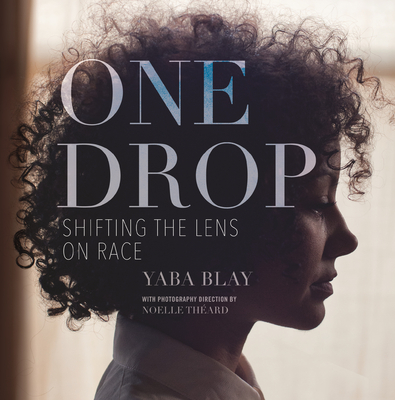One Drop: Shifting the Lens on Race

One Drop: Shifting the Lens on Race
Challenges narrow perceptions of Blackness as both an identity and lived reality to understand the diversity of what it means to be Black in the US and around the world What exactly is Blackness and what does it mean to be Black?
Is Blackness a matter of biology or consciousness?
Who determines who is Black and who is not?
Who's Black, who's not, and who cares? In the United States, a Black person has come to be defined as any person with any known Black ancestry. Statutorily referred to as "the rule of hypodescent," this definition of Blackness is more popularly known as the "one-drop rule," meaning that a person with any trace of Black ancestry, however small or (in)visible, cannot be considered White. A method of social order that began almost immediately after the arrival of enslaved Africans in America, by 1910 it was the law in almost all southern states. At a time when the one-drop rule functioned to protect and preserve White racial purity, Blackness was both a matter of biology and the law. One was either Black or White. Period. Has the social and political landscape changed one hundred years later? One Drop explores the extent to which historical definitions of race continue to shape contemporary racial identities and lived experiences of racial difference. Featuring the perspectives of 60 contributors representing 25 countries and combining candid narratives with striking portraiture, this book provides living testimony to the diversity of Blackness. Although contributors use varying terms to self-identify, they all see themselves as part of the larger racial, cultural, and social group generally referred to as Black. They have all had their identity called into question simply because they do not fit neatly into the stereotypical "Black box"--dark skin, "kinky" hair, broad nose, full lips, etc. Most have been asked "What are you?" or the more politically correct "Where are you from?" throughout their lives. It is through contributors' lived experiences with and lived imaginings of Black identity that we can visualize multiple possibilities for Blackness.
186.00Lei
186.00Lei
Livrare in 2-4 saptamani
Descrierea produsului
Challenges narrow perceptions of Blackness as both an identity and lived reality to understand the diversity of what it means to be Black in the US and around the world What exactly is Blackness and what does it mean to be Black?
Is Blackness a matter of biology or consciousness?
Who determines who is Black and who is not?
Who's Black, who's not, and who cares? In the United States, a Black person has come to be defined as any person with any known Black ancestry. Statutorily referred to as "the rule of hypodescent," this definition of Blackness is more popularly known as the "one-drop rule," meaning that a person with any trace of Black ancestry, however small or (in)visible, cannot be considered White. A method of social order that began almost immediately after the arrival of enslaved Africans in America, by 1910 it was the law in almost all southern states. At a time when the one-drop rule functioned to protect and preserve White racial purity, Blackness was both a matter of biology and the law. One was either Black or White. Period. Has the social and political landscape changed one hundred years later? One Drop explores the extent to which historical definitions of race continue to shape contemporary racial identities and lived experiences of racial difference. Featuring the perspectives of 60 contributors representing 25 countries and combining candid narratives with striking portraiture, this book provides living testimony to the diversity of Blackness. Although contributors use varying terms to self-identify, they all see themselves as part of the larger racial, cultural, and social group generally referred to as Black. They have all had their identity called into question simply because they do not fit neatly into the stereotypical "Black box"--dark skin, "kinky" hair, broad nose, full lips, etc. Most have been asked "What are you?" or the more politically correct "Where are you from?" throughout their lives. It is through contributors' lived experiences with and lived imaginings of Black identity that we can visualize multiple possibilities for Blackness.
Detaliile produsului










